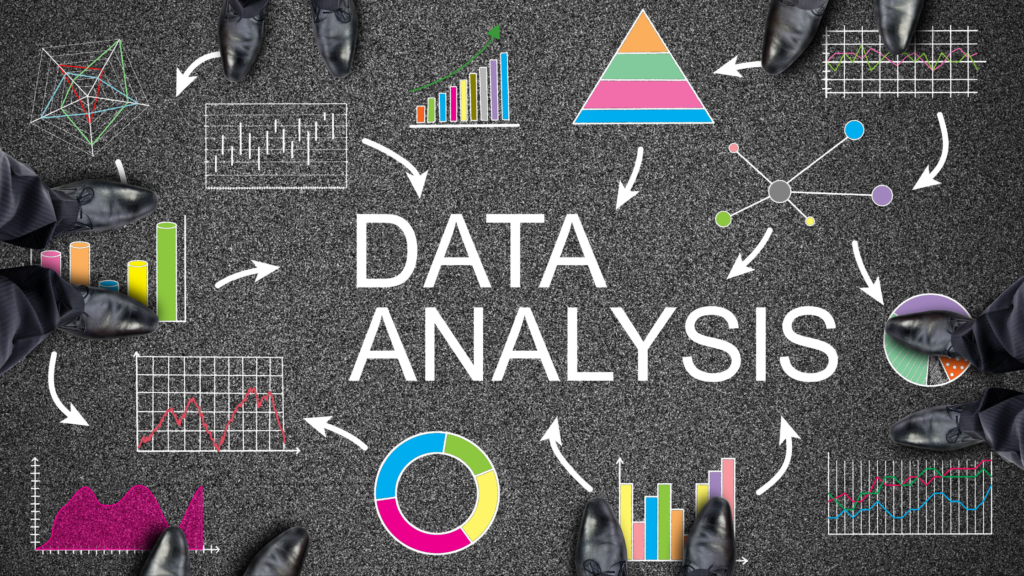Greetings. In this issue, we will provide the basic understanding of logistic regression in the context of machine learning and how it can be used. The emphasis will be made on the logistic regression description, its application, and ways of using it in data science projects. In addition, we have our usual features such as the Career Corner, the Tech Trends Spotlight, and others. Let’s get started!
Table of Contents
Machine Learning using Logistic Regression Technique
Logistic regression is one of the basic classifiers in the machine learning technique. Logistic regression is suited for predicting outcomes in form of categories unlike the linear regression. It is most suitable for problems that are in binary classification since the model is used to predict one of the two classes.
Logistic regression can be defined as the process of mapping the likelihood of a given input being of a certain type. Instead of using predicted values, it maps them to probabilities with the help of the logistic function.
Purpose of Logistic Regression
Logistic regression is used when the dependent variable is categorical and its probability has to be predicted. It is especially helpful when the outcome variable is dichotomous, that is, it has only two possible values (for example, yes/no or true/false). The technique displays the relationship between the dependent variable and one or more independent variables by the logistic function.
Advantages
- Easy to implement and easy to understand.
- Fast and performs well on binary and linear separable data sets.
- Offers the likelihood of the class membership which can be beneficial for the decision-making process.
Limitations
- It makes an assumption that the relation between the input variables and the log odds is linear.
- May have difficulty in handling relations that are involved in data.
- Sensitive to outliers.
Logistic regression is a popular and effective technique in machine learning for several reasons:
Binary Classification: Logistic regression works well for binary classification problems where the prediction is made on a single variable which could take one of two values, for instance, spam and non spam or diseased and non-diseased.
Probabilistic Interpretation: It offers a probability score to each class which assists in decision making in regards to the confidence level of a particular class. This probabilistic interpretation is especially useful in cases where the degree of certainty of the given predictions is an important aspect.
Simplicity and Efficiency: Logistic regression is quite easy to apply and is less demanding on computational resources. It is less demanding and takes less time to analyze as compared to more complicated models; it is ideal for big data.
Linear Decision Boundary: It assumes a linear relationship between the features and the log-odds of the outcome which is fine for most real-world cases. Decision boundary is easily interpretable and can be easily understood.
Feature Importance: The weights of the model coefficients can be interpreted to comprehend the effects of the features on the result. This aspect of interpretability is useful for grasping the presence of relationships in the data.
Regularization: Logistic regression has the functionality of L1 and L2 regularization methods to address the overfitting issue and improve the model’s ability to fit new observations.
Multiclass Extensions: While logistic regression is inherently a binary classifier, it can be extended to handle multiclass classification problems using techniques like One-vs-Rest (OvR) and Multinomial Logistic Regression.
Baseline Model: In this case it acts as a best starting point model. Logistic regression is useful to start with and it allows for establishing a baseline to compare with more elaborate models in the future.
Logistic Regression in Python
Now, let us discuss each step in detail of how to build logistic regression using Python and the scikit-learn package. This example will show you how to make a prediction on whether a student will get admitted to a university or not given examination results. In the below example we will create a Logistic Regression solution in a step by step manner.
Import Libraries and Load Data
To begin with, it is required to import the required libraries and load the data set into the environment. For data handling and analysis, pandas’ is used and for the training and testing of the machine learning model, scikit-learn’ is used.
#import libraries
import numpy as np
import pandas as pd
from sklearn.model_selection import train_test_split
from sklearn.linear_model import LogisticRegression
from sklearn.metrics import accuracy_score, confusion_matrix
# Load dataset
data = pd.read_csv('student_admission.csv')
X = data[['exam1', 'exam2']]
y = data['admitted']Split the Data
Then, the data is divided into training and testing data sets. This is useful in determining the ability of the model to perform on unseen data.
#Split the data in to test and train data
X_train, X_test, y_train, y_test = train_test_split(X, y, test_size=0.2, random_state=42) Train the Model
We then define an instance of the logistic regression model and fit it to the training data.
# train the model
model = LogisticRegression()
model.fit(X_train, y_train)Make Predictions
After the training of the model is complete, we employ the model to predict on the testing set.
#make prediction
y_pred = model.predict(X_test)Evaluate the Model
Last, the model is assessed in terms of accuracy and confusion matrix.
# evaluate the model based on accuracy, confusion matrix
accuracy = accuracy_score(y_test, y_pred)
conf_matrix = confusion_matrix(y_test, y_pred)
print(f'Accuracy: {accuracy}')
print('Confusion Matrix:')
print(conf_matrix)Plotting a Logistic Regression
Visualizing logistic regression can be useful in identifying how the model works as it makes its predictions. It is possible to map the decision boundary between the two classes in the plane.
#plot the logistic regression
import matplotlib.pyplot as plt
import seaborn as sns
# Plotting the decision boundary
def plot_decision_boundary(model, X, y):
x_min, x_max = X.iloc[:, 0].min() - 1, X.iloc[:, 0].max() + 1
y_min, y_max = X.iloc[:, 1].min() - 1, X.iloc[:, 1].max() + 1
xx, yy = np.meshgrid(np.arange(x_min, x_max, 0.01),
np.arange(y_min, y_max, 0.01))
Z = model.predict(np.c_[xx.ravel(), yy.ravel()])
Z = Z.reshape(xx.shape)
plt.contourf(xx, yy, Z, alpha=0.3)
plt.scatter(X.iloc[:, 0], X.iloc[:, 1], c=y, s=10, edgecolor='k')
plt.xlabel('Exam 1 Score')
plt.ylabel('Exam 2 Score')
plt.title('Logistic Regression Decision Boundary')
plt.show()
plot_decision_boundary(model, X, y)By following these steps and understanding the implementation, you can effectively utilize logistic regression for various binary classification tasks in your data science projects.
Career Corner
In this section, we discuss the need for aspiring data scientists to learn core skills as seen in this question that tests the ability to solve a logistic regression problem. These concepts are very useful in improving your skills in the solving of real life problems. We suggest reviewing the courses on Coursera and edX, which are dedicated to the logistic regression and its usage in practice.
Applications of Logistic Regression
Logistic regression is used widely in various domains, including:
- Medical Field: Diagnosis of the disease and identification of factors that will either cause or prevent its occurrence.
- Marketing: Predicting whether or not the customer will buy a certain product.
- Finance: The risk of loan default.
- Social Sciences: Using survey data to make predictions on how people would respond.
Advanced Topics for further reading
For those looking to delve deeper into logistic regression, consider exploring topics such as:
- Regularization Techniques: L1 and L2 regularization to prevent overfitting.
- Multinomial Logistic Regression: Extending logistic regression to multi-class classification problems.
- Model Evaluation Metrics: Beyond accuracy, metrics like ROC-AUC, precision, and recall.
Popular GitHub Repositories
Here are some GitHub repositories that offer valuable resources, projects, and code snippets related to logistic regression and machine learning:
- Scikit-learn – A comprehensive library for machine learning in Python.
- Awesome Machine Learning – A curated list of awesome machine learning frameworks, libraries, and software.
- Logistic Regression Example – Hands-on examples from the book “Hands-On Machine Learning with Scikit-Learn, Keras, and TensorFlow.”
Tech Trends Spotlight
The Tech Trends Spotlight for this week is AutoML tools, which are used in applying machine learning to practical problems. Automated tools like Google AutoML and H2O. ai are helping the data scientists to have better models ready for deployment with little or no fine tuning.
Tools and Resources Recommendations
- Scikit-learn – The software which is used for implementing the logistic regression algorithm in the Python language.
- StatsModels – Contains more statistics models and hypothesis tests.
- TensorFlow – Despite its focus on deep learning TensorFlow also supports logistic regression.
Closing Thoughts
Logistic regression remains one of the most important methods in the machine learning toolbox. Due to its simplicity and high efficiency, it is widely used in binary classification problems. Therefore, if you have successfully gone through logistic regression, you are in a good stead to face other more complex models and problems. Keep experimenting, stay curious, and happy coding!
We trust that you have enjoyed this beginners guide on machine learning with logistic regression and that it has been useful to you. Do not forget to look at the repositories and tools suggested to be used on GitHub. Follow us on LinkedIn to share your projects and ideas. Stay engaged and continue learning!




Hi there! I just wish to give a huge thumbs up for the great data you have got here on this post. I will likely be coming again to your blog for extra soon.
You should take part in a contest for among the best blogs on the web. I’ll recommend this website!